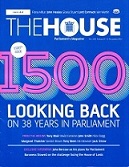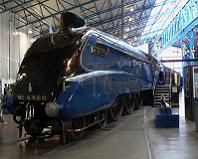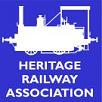HIGH SPEED RAIL (WEST MIDLANDS-CREWE) BILL
| 30th November 2020: Lord Faulkner of Worcester: Speaking on Lord Adonis’s amendment which would have required the Secretary of State within six months of this Act being passed to lay before Parliament the Government’s plans for a Bill providing for the construction of a high-speed railway from the West Midlands directly to Sheffield and Leeds, I said: My Lords, it is a privilege to follow the noble Lord, Lord Bradshaw, who is a most distinguished retired railway manager. He was working for the railway for many years in the last century, and he was a very prominent figure in the industry when I was working for the Board in the 1970s and 1980s. This has been a remarkable debate in that every single speaker has spoken in favour of the amendment tabled by noble friend Lord Adonis, with cross-party support. I find it very heartening that there is such support for High Speed 2 across the House, and indeed in the other place as well. It is right that the Minister has been praised for backing it so wholeheartedly. Column 528is located here I hope that she will not disappoint us when she responds to the debate and gives her view on what happens to this amendment. May I correct one thing that the noble Lord, Lord McLoughlin, said about Pacers? He may not be aware of it, but there is a Pacer rail group, dedicated to buying at least one of these trains. There are Pacers in use on heritage railways now, and there will be one in the National Railway Museum. If he redevelops a wish to see Pacers, they will be around for some while yet, although happily not on the national network. I take this opportunity to congratulate the Government on supporting the railways of Britain, not just through the present emergency but committing to their expansion in the future as well. That is why it is important that these good intentions are not undermined in the case of the eastern link of High Speed 2. There is a cross-party consensus that increasing the capability, the capacity and the use of the national electrified rail network is crucial to delivering the Government’s zero carbon agenda. No other transport project comes as close to achieving that goal as High Speed 2. Travelling on High Speed 2 will emit almost seven times fewer carbon emissions per passenger kilometre than the equivalent car journey, and 17 times fewer than the equivalent domestic flight. Part of the essential case for High Speed 2 is the need to create new capacity on the three main lines going north from Euston, St Pancras and King’s Cross to allow substantial numbers of extra freight trains to run on them. The eastern branch of HS2, connecting Birmingham and the cities of the East Midlands with Sheffield and Leeds is, therefore, vital. We know from the 10-year experience of modernising the west coast main line earlier this century that attempting to create a 21st-century railway by tinkering with a Victorian one creates years of disruption, delay and increased cost. The situation would be as bad or worse if the same were to be tried with the Midland main line and the east coast main line, rather than building the eastern leg of High Speed 2. I finish with a comment from the director of Transport for the North, Tim Wood, in an interview with Modern Railways magazine in the current edition. He said that the eastern leg is as important as the 2b route to Crewe, Manchester and Liverpool: “We all welcome the move, as further progress in delivering a step change for rail travel in the north. The plans to integrate the network on the east of the Pennines need full commitment and to be progressed at speed as well.” I do hope that the Minister will agree, and that she will accept the amendment. A link to the complete debate here |


































